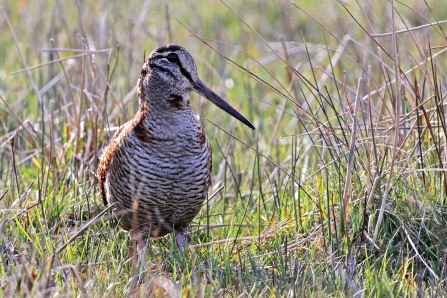Imagine…the sun has set. Dusk is in full swing. You are standing within a ride or glade surrounded by quiet woodland. Although you can hear distant traffic noises, it feels peaceful as you sense the world is settling down for the night. The twilight sky overhead gives an ideal backdrop.
Suddenly, a movement in the sky – a silhouette bee-lining overhead emitting a grunting call. A male woodcock in its ‘roding’ display - perfect. You time check – it’s 8:46pm. It’s the middle of April and your first visit of three; you wait a few minutes to get another glimpse, as you know the woodcock may come round again with its display. This continues for around 30 minutes; woodcock are famously extremely reclusive and shy, which makes these roding displays the only way of effectively surveying them. When you finish your survey, you gather back with the rest of the group to share your success – and leave ready to return in a fortnight to do it all over again.
This is one of the triumphant scenes from our woodcock surveys held at Potteric Carr nature reserve this year. Mark Roberts, Reserves Officer for the site, organised a team of dedicated volunteers to target specific areas on the nature reserve where woodcock are likely to be found.

